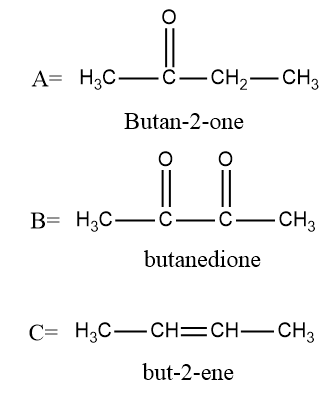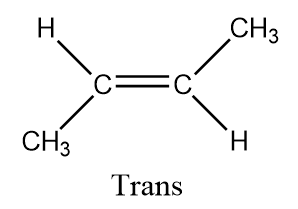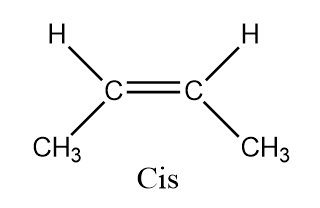
Answer
395.1k+ views
Hint :We know that isomers are the molecules which have the same molecular formula but different structural formula. Mainly isomers are divided into two types- the structural isomers and the geometrical or stereoisomers. So, stereoisomers are the ones which have the same composition (or same parts) but those parts differ when oriented in space. Further stereoisomers are divided into diastereomers and enantiomers.
Complete Step By Step Answer:
In the first step we will convert $ {\text{butan}} - 2 - ol $ into $ {\text{butan}} - 2 - one $ as $ PCC $ is an oxidizing agent which converts alcohols into aldehydes or ketones but is not strong enough to further convert them into carboxylic acid so the reaction will stop when an aldehyde or a ketone is formed.
So, the conversion equation will be: -

Now in the next step selenium dioxide is used to convert $ {\text{butan}} - 2 - one $ into butanedione as $ Se{O_2} $ is also an oxidizing agent which converts alkenes into alcohols and further converts alcohol into aldehydes or ketones.
So, the conversion equation will be: -

Now we see that butanedione will be converted into but $ {\text{butan}} - 2 - ene $ is a reducing agent and is being added in the last step. $ LiAl{H_4} $ is a reducing agent and will first convert ketone into alcohol and then into alkene.
So, the conversion equation will be: -

Therefore, in the given equation: -

To determine the number of stereoisomers possible in $ {\text{butan}} - 2 - ene $ we will draw the structures


Hence there are two types of ismores possible in this and hence it forms $ {\text{Cis - butan}} - 2 - ene $ and $ {\text{Trans - butan}} - 2 - ene $
So, the correct answer is Option A.
Note :
Here $ {\text{butan}} - 2 - ene $ is a diastereomer. Diastereomers are stereoisomers which are not the mirror images of one another and are not superimposable on one another. Also, cis isomers are the isomers those have the two single hydrogen atoms present on the same side while trans have the two single hydrogen atoms present on the opposite sides.
Complete Step By Step Answer:
In the first step we will convert $ {\text{butan}} - 2 - ol $ into $ {\text{butan}} - 2 - one $ as $ PCC $ is an oxidizing agent which converts alcohols into aldehydes or ketones but is not strong enough to further convert them into carboxylic acid so the reaction will stop when an aldehyde or a ketone is formed.
So, the conversion equation will be: -

Now in the next step selenium dioxide is used to convert $ {\text{butan}} - 2 - one $ into butanedione as $ Se{O_2} $ is also an oxidizing agent which converts alkenes into alcohols and further converts alcohol into aldehydes or ketones.
So, the conversion equation will be: -

Now we see that butanedione will be converted into but $ {\text{butan}} - 2 - ene $ is a reducing agent and is being added in the last step. $ LiAl{H_4} $ is a reducing agent and will first convert ketone into alcohol and then into alkene.
So, the conversion equation will be: -

Therefore, in the given equation: -

To determine the number of stereoisomers possible in $ {\text{butan}} - 2 - ene $ we will draw the structures


Hence there are two types of ismores possible in this and hence it forms $ {\text{Cis - butan}} - 2 - ene $ and $ {\text{Trans - butan}} - 2 - ene $
So, the correct answer is Option A.
Note :
Here $ {\text{butan}} - 2 - ene $ is a diastereomer. Diastereomers are stereoisomers which are not the mirror images of one another and are not superimposable on one another. Also, cis isomers are the isomers those have the two single hydrogen atoms present on the same side while trans have the two single hydrogen atoms present on the opposite sides.
Recently Updated Pages
How many sigma and pi bonds are present in HCequiv class 11 chemistry CBSE

Mark and label the given geoinformation on the outline class 11 social science CBSE

When people say No pun intended what does that mea class 8 english CBSE

Name the states which share their boundary with Indias class 9 social science CBSE

Give an account of the Northern Plains of India class 9 social science CBSE

Change the following sentences into negative and interrogative class 10 english CBSE

Trending doubts
Fill the blanks with the suitable prepositions 1 The class 9 english CBSE

Which are the Top 10 Largest Countries of the World?

Difference Between Plant Cell and Animal Cell

Difference between Prokaryotic cell and Eukaryotic class 11 biology CBSE

Differentiate between homogeneous and heterogeneous class 12 chemistry CBSE

Give 10 examples for herbs , shrubs , climbers , creepers

How do you graph the function fx 4x class 9 maths CBSE

The Equation xxx + 2 is Satisfied when x is Equal to Class 10 Maths

Write a letter to the principal requesting him to grant class 10 english CBSE




